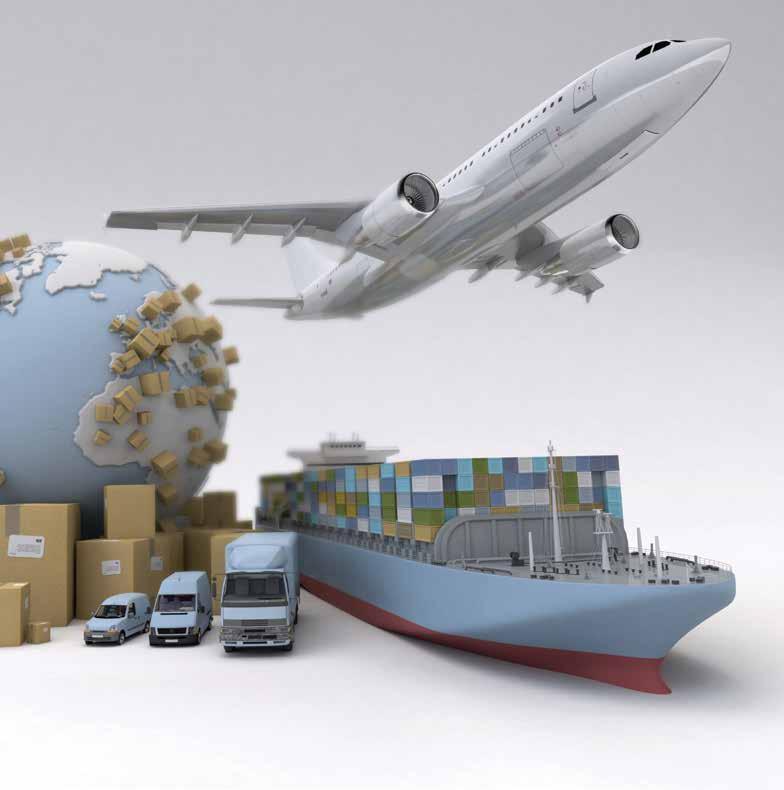
4 minute read
Supply Chain Investment
Investing in supply chain management is no longer just for big companies
Supply chain management is becoming more egalitarian – no more a function of company size
Supply chain management is becoming increasingly eclectic, more expansive and inclusive asserts Saikat Kumar, CEO and Founder, Skycap Investments, in this contribution—Editor.
Supply Chain Management, the wider organization’s data, leading to limited process by which companies optimize visibility, increased risk, extra cost and the flow of goods and services from impaired customer service. source to consumer, was earlier Digital and strategic Supply Chain considered to be the game of the big transformations were seen to be the company. territory of massive companies with
Smaller companies used to manage considerable IT and organizational inventories, distribution, and procurement resources to allocate. In other words, on an ad-hoc basis. companies with supply chains have grown
They used spreadsheets or other similar to be so complex that they need to be more software that wasn’t integrated with the carefully managed. If you were a growing smaller company, the mindset was to deal with deeper Supply Chain considerations after the company grew. Now, companies of every size are realizing that a flexible, nimble Supply Chain operation is a necessity. This is especially true for growing companies, who can sink their profitability as they expand without strong Supply Chain foundations in place–be it through product shortfalls, quality issues, controversies, or customer service snafus.
Saikat Kumar,
one of the prominent names in the Middle East investment banking and financial industry, is the Founder and CEO, Skycap Investment Management. Kumar has over 23 years of experience in banking and finance, which includes his stint as Partner and Senior Executive Officer, Al Masah Capital.
He has played key roles in a number of internationally-recognized banks including ABN AMRO, ANZ Grindlays, Standard Chartered and ICICI.
Supply Chains for all
Smaller companies across industries–consumer goods, food production, pharmaceutical, services – have recognized that strong Procurement and Supply Chain Management is a crucial strategic asset.
Spending on supply chain management software hit an estimated US$ 13bn in 2017. Market estimates indicate that total software revenues in the supply chain management market will rise to US$ 19bn by 2021.
Third-party logistics (3PLs) providers are driving the growth in technology investment as they digitize their offerings. In the heavily fragmented freight forwarding market, providers are setting themselves apart by developing new platforms to help customers optimize operations.
3PL takeoff
3PLs are experiencing significant growth and small to mid-size customers are helping drive this expansion, which is projected to significantly grow. It is estimated that the global 3PL market will reach US$ 1.25tn by 2025.
The move to cloud-based technology is also making supply chain platforms more accessible for smaller businesses. By 2021, cloud technology will make up 35 percent of all deployments.
With supply chain technology now within reach for more businesses, the case
for investing in tools that drive optimization is clear. A technology-driven supply chain helps improve end-to-end visibility and control over goods from purchase order to final destination, uncovering new ways to drive efficiencies and reduce costs.
A Gartner study found that strategic supply chain outsourcing can save companies up to 20 percent of their costs over five years. While technology is the backbone of the modern supply chain, small and mid-size businesses can drive even more value through a supply chain partner who combines technology with strong logistics expertise and support.
Global supply chain post-Covid
The supply chain has evolved into a highly sophisticated tool that is vital to the nature of competition for many companies. However, their interconnectedness and

globalization makes them increasingly vulnerable by introducing a wide range of new and unfamiliar risks. Covid-19 has reminded many companies that they are not immune to high-risk threats.
To counter that, new supply chain technologies are emerging that show promise in dramatically improving visibility and transparency across the entire value chain to enhance agility and resilience of operations without the traditional overheads.
Advances in communication and information technology are making the evolution of the supply chain possible. Emerging and evolving technologies such as IoT, 5G, AI, 3D printing, and cloud computing are essential components in building the digital supply network of the future. The current volatile business landscape is creating an imperative for a new supply chain model.
Linear supply chain transformation
The traditional view of a linear supply chain and optimization restricted to your own business is transforming into digital supply networks (DSNs) where functional silos are broken down within your organization and you are connected to your full supply network to enable end-to-end visibility, collaboration, responsiveness, agility, and optimization.
Increasingly, these digital supply networks are being built and designed to anticipate disruptions and reconfigure themselves appropriately to mitigate their respective impacts. Whether it is a black swan event such as Covid-19, a trade war, or a supplier’s bankruptcy, companies are forced to learn how to survive and thrive on the uncertain and unexpected. n







